11.8: Problem
( \newcommand{\kernel}{\mathrm{null}\,}\)
- Show using the component form of the cross product given by equation (11.4) that A × B = -B × A.
- A mass M is sliding on a frictionless table, but is attached to a string which passes through a hole in the center of the table as shown in Figure 11.8.8:. The string is gradually drawn in so the mass traces out a spiral pattern as shown in Figure 11.8.8:. The initial distance of the mass from the hole in the table is R and its initial tangential velocity is v. After the string is drawn in, the mass is a distance R′ from the hole and its tangential velocity is v′.
- Given R, v, and R′, find v′.
- Compute the change in the kinetic energy of the mass in going from radius R to radius R′.
- If the above change is non-zero, determine where the extra energy came from.
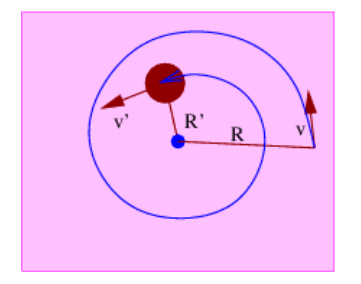 Figure 11.8.8:: Trajectory of a mass on a frictionless table attached to a string which passes through a hole in the table. The string is drawing the mass in.
Figure 11.8.8:: Trajectory of a mass on a frictionless table attached to a string which passes through a hole in the table. The string is drawing the mass in.
- A car of mass 1000 kg is heading north on a road at 30 m s-1 which passes 2 km east of the center of town.
- Compute the angular momentum of the car about the center of town when the car is directly east of the town.
- Compute the angular momentum of the car about the center of town when it is 3 km north of the above point.
- The apparatus illustrated in Figure 11.8.9: is used to raise a bucket of mass M out of a well.
- What force F must be exerted to keep the bucket from falling back into the well?
- If the bucket is slowly raised a distance d, what work is done on the bucket by the rope attached to it?
- What work is done by the force F on the handle in the above case?
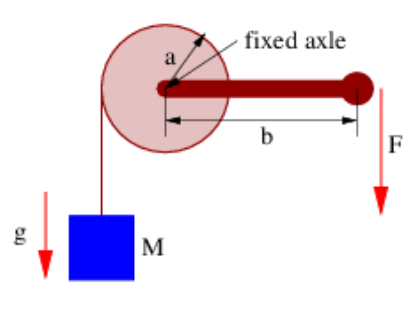 Figure 11.8.9:: A crank on a fixed axle turns a drum, thus winding the rope around the drum and raising the mass.
Figure 11.8.9:: A crank on a fixed axle turns a drum, thus winding the rope around the drum and raising the mass.
- Derive equations below.
- Ktotal =Ktrans +Kintern =[Mtotal V2cm/2]+[M1v′21/2+M2v′22/2] .
- Ltotal =Lorb +Lspin =[Mtotal Rcm×Vcm]+[M1r′1×v′1+M2r′2×v′2]
- A mass M is held up by the structure shown in Figure 11.8.10:. The support beam has negligible mass. Find the tension T in the diagonal wire. Hint: Compute the net torque on the support beam about point A due to the tension T and the weight of the mass M.
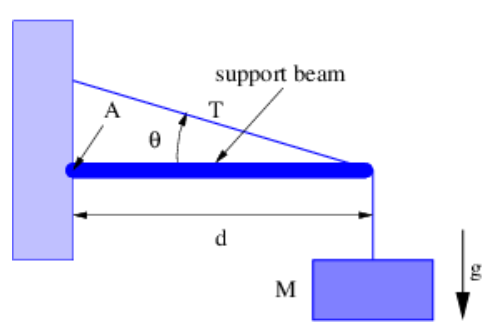 Figure 11.8.10:: A mass is supported by the tension in the diagonal wire. The support beam is free to pivot at point A.
Figure 11.8.10:: A mass is supported by the tension in the diagonal wire. The support beam is free to pivot at point A. - A system consists of two stars, one of mass M moving with velocity v1 = (0,v, 0) at position r1 = (d, 0, 0), the other of mass 2M with zero velocity at the origin.
- Find the center of mass position and velocity of the system of two stars.
- Find the spin angular momentum of the system.
- Find the internal kinetic energy of the system.
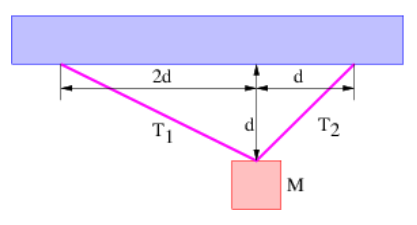 Figure 11.8.11:: A mass is supported by two strings.
Figure 11.8.11:: A mass is supported by two strings. 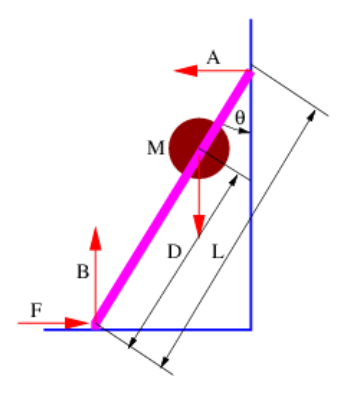 Figure 11.8.12:: A ladder leaning against a wall is held in place the force F acting on the base of the ladder.
Figure 11.8.12:: A ladder leaning against a wall is held in place the force F acting on the base of the ladder.
- A solid disk is rolling down a ramp tilted an angle θ from the horizontal. Compute the acceleration of the disk down the ramp and compare it with the acceleration of a block sliding down the ramp without friction.
- A mass M is suspended from the ceiling by two strings as shown in Figure 11.8.11:. Find the tensions in the strings.
- A man of mass M is a distance D up a ladder of length L which makes an angle θ with respect to the vertical wall as shown in Figure 11.8.12:. Take the mass of the ladder to be negligible. Find the force F needed to keep the ladder from sliding if the wall and floor are frictionless and therefore can only exert normal forces A and B on the ladder.


